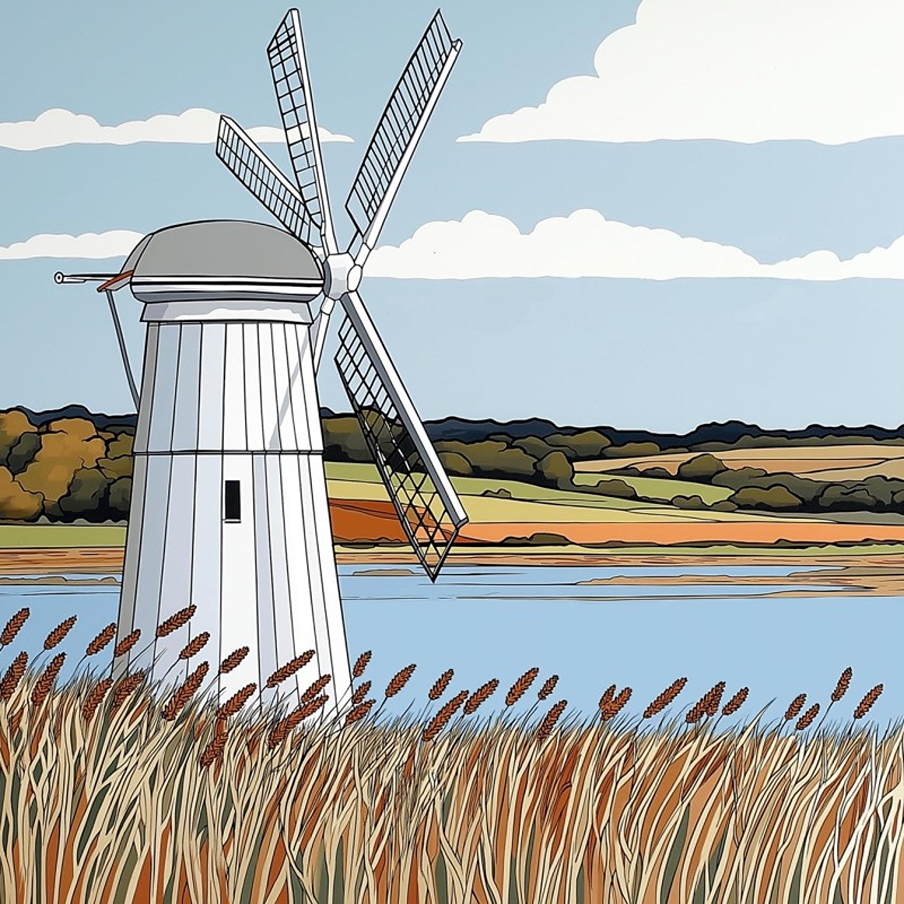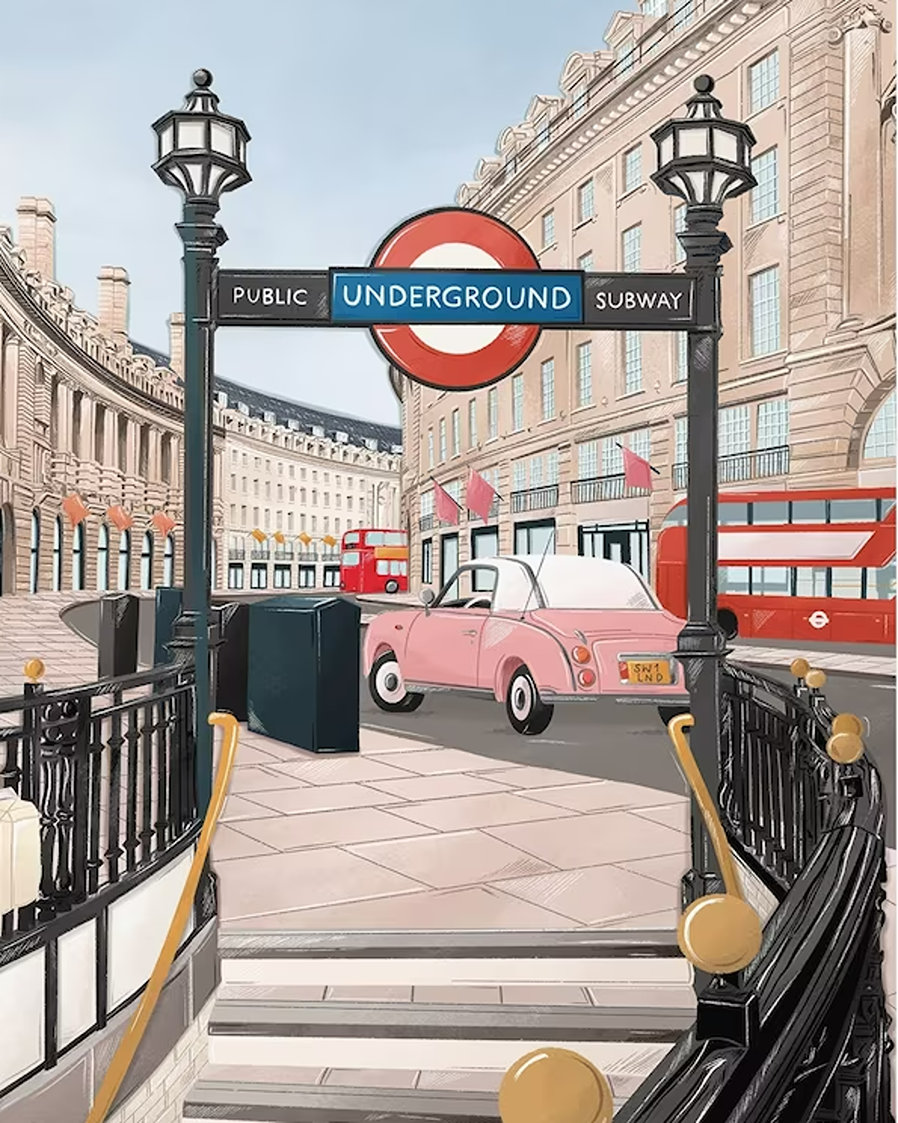Durham: A Romanesque Cathedral, St Cuthbert, High Force Waterfall

County Durham is a wild isolated county, full of gorgeous countryside, and haunting scenery, where you’ll find everything from wild cattle to birds of prey enjoying nature at its best.
The city of Durham is (like Rome) built on seven hills, and home to one of England’s top universities. Hence it’s full of affordable student accommodation, and one of the best cities for independent shops. There is also a small coastline (Seaham)
Always follow the Countryside Code, to keep all creatures safe.
If at the coast, read our post on keeping dogs safe by the seaside.
More Sheep Than People!
Learn how to right an overturned sheep or it will die. Just firmly turn it back up, then hold upright until rain has drained off).
Durham City: The Heart of the County
Durham City feels like the centre of everything. Cobbled streets run along the River Wear, winding past shops, cafes, and historic buildings.
The city buzzes with life from a strong student presence, but it never loses its old-world charm. Explore the Market Place, or relax by the river with a view of the towering cathedral.
A City Built on Seven Hills
Durham’s dramatic setting makes it unlike most English towns. Built across seven hills, the city rises and falls in a patchwork of steep streets, green banks, and stone buildings with the River Wear curving around the centre like a silver ribbon. The hills create more than a postcard view—they shape how the city looks, feels, and even how people move through it.
Geography That Shapes the City
Durham’s hills are not just a background. They cut through the centre and edge out to the suburbs, setting the stage for every walk and every glance. The city’s heart stands on rocky ground, surrounded by the River Wear which loops almost fully around it, leaving the medieval core on a natural peninsula. This feature once made Durham easy to defend, and now it gives the city a sense of closeness.
The river’s curving path means many of the main sights, from the grand cathedral to university colleges, stand high above the water. Houses, shops, and cobbled lanes tumble down towards the Wear or rise up steep banks, giving each street its own character and view.
The Seven Hills: Echoes of Ancient Cities
The idea of a city built on seven hills carries a certain weight. Rome might be the most famous example, but Durham’s seven hills are a source of pride and local stories. Each hill has its own name and shape, but together, they give Durham its unique skyline and feeling. People here sometimes list them out in conversation, almost like a badge of honour.
Here’s a look at the seven hills that make up front and centre in the city’s identity:
- Cathedral Hill (Palace Green): The spiritual centre, with the cathedral and castle towering above the river
- Windy Hill: Known for its sweeping outlooks across the city
- Mount Joy: A leafy rise, popular with students and walkers
- Whinney Hill: Edged by college buildings and family homes
- Claypath Hill: Where the old main road leads into town
- Gilesgate: Now a busy suburb, once a key entry into Durham
- Crossgate: Old streets lining the slopes across from the castle
While not as grand as Rome’s, Durham’s hills mean the city has few straight, flat streets. Instead, you find hidden lanes, steps, and bridges tucked into every slope. This gives the city its winding, often playful feeling and rewards those who like to explore on foot.
St Cuthbert and the Legend of the Mist

St Cuthbert lived on Lindisfarne and the Farne Islands, but is buried here. He used to guard sheep and passed laws to protect eider ducks, regarded as ‘the world’s first environmentalist’. It’s said that after he went swimming, otters would dry his feet, with their fur!
It’s said that he became a monk after witnessing angels carrying St Aiden (the monastery’s abbot) to Heaven.
St Cuthbert’s journey belongs to the heart of Durham’s story. In the 9th century, as Viking raids swept England, monks carried the remains of St Cuthbert (one of the most loved saints in northern England) from place to place, always seeking safety from danger. Their path was long and winding, crossing rivers and hills, with the body moved again and again for fear of attack.
According to legend, the monks reached a wild, wooded hill—what is now Durham. Here, the story says, St Cuthbert’s coffin became too heavy to carry. The monks took this as a sign from above that they had reached the chosen resting spot. They settled, a small community grew, and eventually, the magnificent Durham Cathedral was built as a shrine to the saint.
What makes this legend so memorable?
- The idea that the land itself chose St Cuthbert’s resting place
- The stunning cathedral that now stands guard over his remains
- The sense of protection that still lingers in stories today
This feeling of protection only grew stronger during World War II. As bombs fell on cities across Britain, Durham seemed shielded by something unseen. Locals still talk about the “mist of St Cuthbert.” According to the story, a thick fog regularly rolled over the cathedral and the old city on nights when bombers flew overhead. Pilots reported not being able to find their target, saving the city from disaster.
Try to picture it: blacked-out streets, air raid sirens echoing, families huddled together—and then, the sudden lift of worry as the mist rolls in, hiding the soaring cathedral spire. Whether you believe the legend or not, that strong sense of being watched over is woven into Durham’s character even now.
Durham in Hard Times: The Great Depression
Durham’s streets are lined with old miners’ terraces, stone chapels, and school buildings. These speak of times when work was tough and money was tight, especially during the Great Depression of the 1930s.
When the coal industry slumped, wages shrank, and jobs disappeared almost overnight. Families lived close together in small houses, sharing what they had and making ends meet however they could.
Shops closed early, men queued at the colliery gates, and uncertainty became the norm. Yet, through those bleak days, communities in Durham refused to give up hope.
Neighbours pitched in for each other. If someone ran out of food or coal, a bit would be found next door. Local churches and clubs became lifelines, handing out cups of tea or running clubs for children whose parents were struggling. Simple comforts—a loaf of bread, a warm fire, a borrowed book—got families through.
The Castle: From Fortress to College
Just a stone’s throw from the cathedral sits Durham Castle, as much a part of city life as the bells which ring out each Sunday. First built in 1072, the castle has seen everything from royal feasts and sieges to lazy afternoons now, as part of Durham University.
This castle was not built for show. Its thick walls, narrow staircases, and high battlements were made to keep the city safe in the wild days when armies moved along the northern border. Later, it became the grand home of the Bishop of Durham, who ruled the region almost like a king.
The University: Life and Pulse of the City
Durham University shapes almost every part of city life. With close to 20,000 students, it keeps the city young, curious, and full of different voices. Durham’s colleges line narrow lanes and leafy hills. Each has its own quirks, with formal dinners, quirky sports, and student-run events that fill the calendar.
You don’t have to go far to see how much the university brings to the city. Cafés brim with students swapping ideas over laptops, theatres put on student plays, and bookshops serve both locals and scholars. The energy is steady but never frantic.
Being a university city means Durham finds its rhythm in term dates: the place is busy during term and gets a bit quieter in the holidays. Parents, professors, and alumni mix with daily crowds, making the shops and parks busier than you might expect for a place this size.
A Controversial Prime Minister Studied Here
Although Tony Blair was born in Scotland, his family moved to Durham when he was five, and as an adult, he returned from Oxford University and living elsewhere, to represent a new constituency, which was to make him an MP and then prime minister.
At first lauded as someone fresh and positive, of course since then, much controversy has ensued, due to it later been found that there were not weapons of mass destruction, meaning the war with Iraq (not authorised by a United Nations Security Council resolution) violated the UN charter. He now advises governments with his own foundation.
A Beautiful Romanesque Cathedral

Durham Cathedral is one of England’s best, with a stone vaulted ceiling, and one of the best examples of Romanesque architecture.
The shrine at the cathedral is popular for pilgrims, learning the history of local St Cuthbert, who lived on Lindisfarne and the Farne Islands, but is buried here.
He used to guard sheep and passed laws to protect eider ducks, regarded as ‘the world’s first environmentalist’. It’s said that after he went swimming, otters would dry his feet, with their fur!
It’s said that he became a monk after witnessing angels carrying St Aiden (the monastery’s abbot) to Heaven.
Hamsterley Forest: Woodland Adventures
Hamsterley Forest lies in the west of the county and covers more than 2,000 hectares. There are marked trails for all levels and picnic spots with lovely views. In spring and summer, wildflowers fill the paths, while autumn brings colourful leaves and crisp air.
High Force Waterfall: Nature’s Power on Show
High Force is one of England’s most stunning waterfalls. The River Tees drops 21 metres, sending a rush of water into a deep pool below. The name is from ‘foss’ which is Nordic for waterfall.
Situated near the North Pennines, this is likely the largest (but not the highest waterfalls), but is the biggest by volume of water, with three different types of ancient rock present. Near the Teesdale market town of Middleton, locals can nearly always hear the water running.
Take very good care as some people have died visiting the top of this waterfall, as the drop is so powerful. People are advised not to swim here.
Just admire and then take in the beautiful North Pennines countryside nearby. There is a legend of a ghost – a Victorian farm girl who threw herself into the river, after a failed affair with a local miner.
One thrill-seeker who tried to back-flip from this waterfall narrowly survived, and warned others not to do it, also saying ‘sorry mum’ for giving her such a fright. He had carried out a full risk assessment but found himself dragged under the strong current, nonetheless.
Safely Enjoy Walks Near Waterfalls
- Ensure you wear sturdy shoes with good grip, as wet rocks can be very slippery, especially if they have moss or algae.
- Never get too close to the edge of a waterfall, nor swim in the waters below it, however calm they look. Not only can the water force be extreme, but often there are hidden rocks below.
- If there are safety rails, know they are there for a purpose and keep behind them. Obey safety notices.
- If you take photos, look where you are going rather than at the waterfall. You could slip or fall, as waterfalls have a lot of uneven ground.
The Durham Dales: Hills, Valleys, and Villages

You’ve heard of the Yorkshire dales. Well, there are Durham Dales too! These offer open landscapes and rolling hills, and pass through pretty villages like Stanhope and Middleton-in-Teesdale. It’s the place to clear your head and take in sweeping views.
Heritage Coast: Cliffs and Sandy Beaches
Durham’s coastline runs from Seaham in the north to Crimdon in the south. The cliffs, dunes, and wide sands are full of nature, including coastal flowers in summer.
The Birthplace of English Mustard
The city of Durham is where this popular condiment was born. When Mrs Clements decided to grind up mustard seeds like flour, at a mill on Sadler Street. Back in 1720.
In the early 18th century, Durham became the site of the first mustard mill in England. Before this, mustard was sold in rough, whole seeds, which people ground at home. The new mill ground the seeds to a fine powder, which made using mustard faster and easier.







